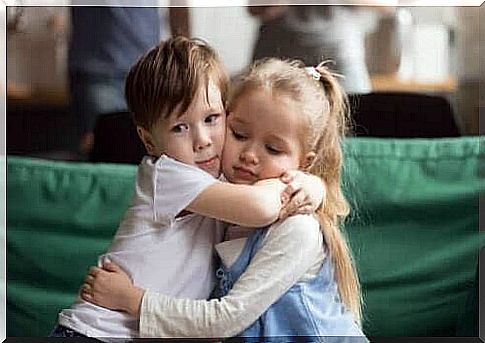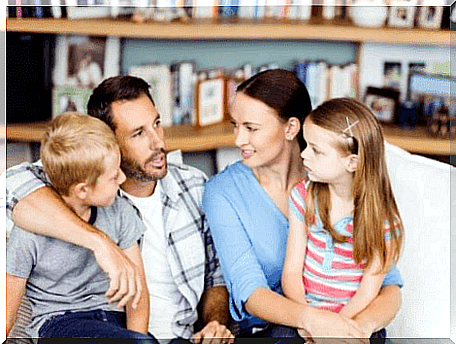How To Teach Your Child To Apologize
Apologizing is usually not an easy task, even for adults. Discover practical tips on how to teach your child to apologize below.

Parents often find it difficult to teach their children to apologize. However, this is not necessarily because they lack empathy, but rather because they often apologize in ways that are unexpected and sometimes incomprehensible to adults.
Children are naturally empathetic. You have probably already seen your child have tears in their eyes during a sad movie scene. Children are very compassionate, but they don’t behave like adults, nor do they naturally obey social rules. It is up to the parents to teach them how to do this.
How to teach your child to apologize

- “Apologize for beating her.”
- “Apologize to me and never talk to me like that again.”
- “I’m waiting for you to apologize.”
These or similar-sounding sentences are sure to sound all too familiar to you!
Sometimes words come out of your mouth without you thinking about whether or not to say them. Do you think that you are teaching your child to apologize by making them apologize ? The answer is a clear no. An emphatic murmur of “sorry” teaches your child nothing more than to obey their parents.
The ultimate goal of teaching forgiveness is not to get your child to say the expected words, but to take responsibility for their mistakes. And in order to do that , it has to understand why what it did was wrong.
1. Help your child calm down
Most of the time, children have to apologize for being out of control because they were angry. Requiring your child to apologize at this point can be counterproductive for several reasons:
- The child will not understand why to apologize.
- It’s possible it will only get angrier.
- It won’t learn anything from what happened.
Instead, take deep breaths, approach your child, and withdraw them from the place where the conflict occurred. Allow your child to distance themselves from the situation and calm down. You can help him by talking to him, always with patience and without asking him to apologize.
2. Analyze the situation with your child

When your child has calmed down, it’s time to analyze what exactly happened. Let your child tell their version of the story and allow them to express how they are feeling. Emotions play an important role in conflict situations ; in fact, they are the trigger for the child’s actions.
3. Foster empathy to teach your child to apologize
Now that you know what happened and why your child reacted this way, ask how they would have felt in the other child’s place. You can tell him a similar situation that you experienced yourself. Your child should be able to empathize with others and understand their own mistakes.
4. Analyze with your child what they could have done differently
“If you could go back in time, what would you change about what happened?” This exercise allows your child to think about other ways to resolve the conflict. Although brainstorming wo n’t solve the current situation, it is a great way to learn how to handle future emotions.
5. Ask your child how they could help the other child feel better

Let your child decide how to apologize. Sometimes the actual word “sorry” is not what children need or want. Perhaps your child prefers to hug the other person, invite them to play, or give them a drawing. The most important thing is that your child learns to take responsibility for their actions in one way or another.
The apology should not only express the child’s mistake, but also be a way to make up for the hurt feelings. For example, “I’m sorry that I hit you. I know it hurt and I won’t do it again. The next time I get angry, I’ll try to talk to you instead of hitting you. “
To teach your child to apologize, you need to lead by example! Every time you make mistakes or react badly to a situation, you need to apologize. Apologizing is not a weakness, it is a strength. As parents, we have to set a good example because our children learn by setting a positive example.









